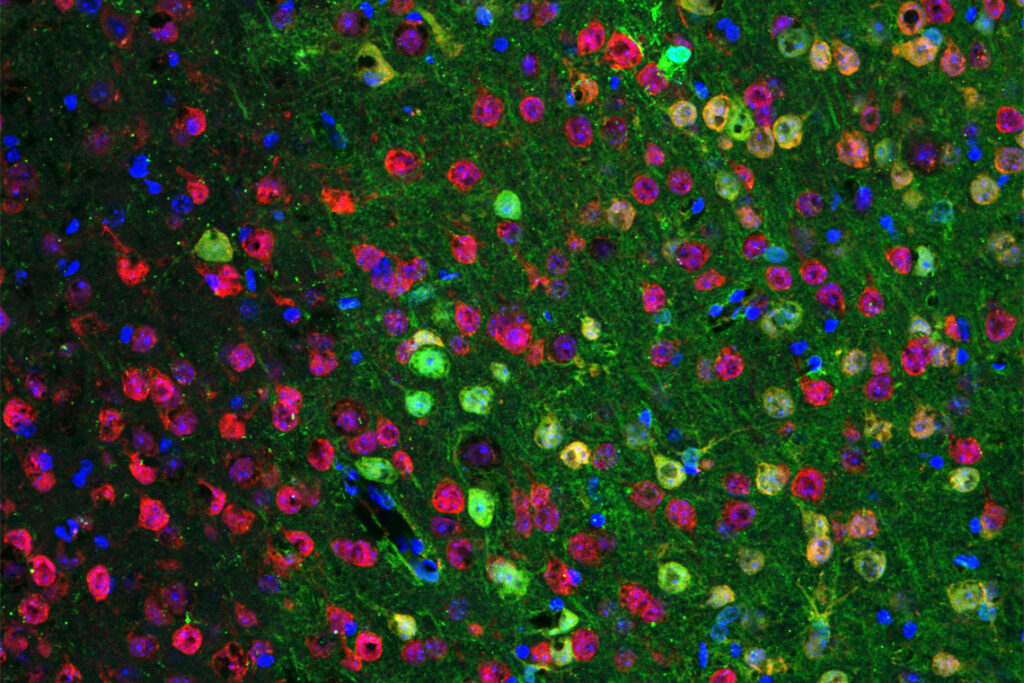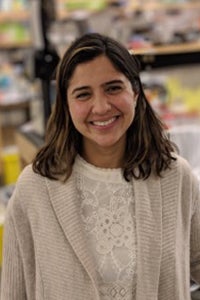U of T researcher ‘reprograms’ brain cells in pursuit of new therapy for stroke patients

Could “reprogramming” the brain at a cellular level help people recover from strokes faster and better? One researcher from the University of Toronto’s Temerty Faculty of Medicine aims to find out.
Strokes happen when blood flow to the brain is disrupted, resulting in irreversible damage to neurons, the brain cells that control behaviour and movement. For the 50,000 Canadians who will experience stroke each year, more than half will be left with lifelong impairments in the ability to move, eat or communicate.
But research by neuroscientist Maryam Faiz, a professor in the department of surgery who studies neuronal reprogramming, suggests a new kind of therapy for post-stroke recovery. She says astrocytes – a network of bushy cells Faiz likens to “a night sky” – are thought to play an important role in the brain’s circuitry. With reprogramming, she says, astrocytes can be converted into neurons to replace those cells lost to stroke damage.

“We think of this as a new strategy for neural repair,” says Faiz, adding that, in the lab, the technique shows good results in mice with post-stroke impairments in mobility and gait.
“After reprogramming, those abilities recover to the level of an uninjured animal.”
The technique may help extend the window for the recovery process. Current stroke recovery interventions are time-sensitive, with the greatest gains taking place in the hours that follow a stroke.
In Faiz’s experiments, however, reprogrammed mice showed continued recovery, even at the nine-week mark. In these experiments, researchers administered reprogramming to the mice a week following their strokes.
“We could see functional recovery early in the reprogramming process,” Faiz says. “Animals were walking better and this extended to much later time points.”
While Faiz’s lab research focuses on tiny astrocytes and neurons, the patient outcome is never far from her mind.
Her work took a personal turn two years ago when a close family member suffered a traumatic brain injury as the result of an accident. Witnessing their ongoing recovery process highlighted the potential impact of Faiz’s research, which could be applied to stroke recovery – but also in the treatment of Parkinson’s or Alzheimer’s diseases or a traumatic brain injury.
“Knowing someone who has had a brain injury is eye-opening,” she says. “It can have a massive impact on every part of their life.”
Faiz, who joined the Temerty Faculty of Medicine in 2017, is one of three recipients of the inaugural Temerty Pathway Grant. Launched in 2020, the internal funding program supported by the Temerty family awards $100,000 each to three promising research projects that have not yet been successful in grant competitions.
The bridge funding allows researchers to keep working on a project and submit a stronger grant application in the next round.
“The Pathway Grant gave me room to breathe,” says Faiz. “When you don’t get your CIHR grant, you’re just back in the lab 24 hours a day, trying to get the next set of data.”
Faiz and fellow Pathway recipients Thierry Mallevaey and Scott Yuzwa, in the departments of immunology and laboratory medicine and pathobiology respectively, were awarded CIHR funding in the round of grants announced this spring.
“The Temerty Pathway Grant Program is designed to provide bridge funding for early career researchers like Professor Faiz to achieve CIHR funding,” says Reinhart Reithmeier, senior adviser to the vice-dean research and graduate education. “I congratulate the first three winners, Professors Faiz, Mallevaey and Yuzwa, on their success in the last CIHR Program grant competition.”
While Faiz’s initial recovery results in mice are promising, little is known about how the reprogrammed neurons integrate into the circuitry of the brain.
With funding from the CIHR to Faiz and co-applicants Shreejoy Tripathy, an assistant professor of psychiatry and Melanie Woodin, dean of the Faculty of Arts & Science and a cell and systems biology professor, Faiz hopes to understand what’s happening at different periods during the stroke recovery process and how reprogramming contributes to brain recovery and repair.
“Is the cell we’re making important for recovery or does reprogramming exert an effect in the environment around the cells that could lead to change?” she asks. “Are these new cells actually responsible for recovery or might something else be happening here?
“Our study will answer these questions and help us understand if and how these newly generated neurons are responsible for the recovery in function that follows neuronal reprogramming.”